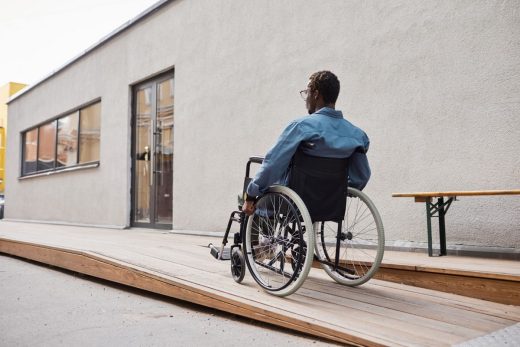The pros and cons of installing a home lift, Accessibility solutions in homes guide, Property internal access hoist
Pros and Cons of Installing a Home Lift Guide
13 Oct 2023
Modern technology has advanced enough to make lifts available for use in multi-story residences. These home lifts can add convenience, safety, and even aesthetic appeal to a house, and can last for decades if they’re well taken care of. A home lift can make a multi-story house more accessible for people of any age, and allow seniors to continue living in their homes without the fear of tripping and falling.
Pros and Cons of Installing a Home Lift in your Property
Anyone who wants to explore their options can ask a residential elevator provider like Pneumatic Vacuum Elevators for a quote. Many home elevator companies work specifically with people who have mobility issues, so they know that convenience and speed is a priority. Regardless of the type of home lift that’s installed, there’s no doubt that they make life easier for everyone in the house.
Pros of installing a home lift
If you’re wondering whether a home lift is the right choice for your home (or the home of a loved one), there are plenty of advantages. These are the main ones.
- They increase safety and accessibility in the home
Statistics show that every 90 seconds in the UK, someone trips and falls down the stairs; this results in around 250,000 non-fatal accidents per year. Many of these accidents involve the elderly or disabled, who have a harder time safely going up and down stairs. A home lift greatly reduces this risk, since the person using it simply has to enter it and push a button.
This has the added advantage of “future-proofing” the home. Some seniors reach a stage at which they have to consider moving into a different living space, or hiring a home health aide who can help them navigate the house safely. However, a home lift can remove one of the riskiest aspects of living at home as an elderly person, allowing the resident to keep enjoying familiar surroundings.
- They may not require major structural changes
This will depend on the type of home elevator that’s being installed. For example, pneumatic elevators don’t require an elevator shaft; the main structural change that’s needed is to cut a hole in the first-floor ceiling so that it can pass through to the second floor (or third, or fourth, as needed). However, it’s important to keep in mind that some types of home lifts (like hydraulic lifts) require both a shaft, and a dedicated machine room for the associated equipment.
- They add value to the home
Regardless of which type of home lift is installed, it represents an investment that will raise the value of the property for potentially decades. Home elevators may cost a decent amount of money, but that’s generally reflected in the house’s market price as long as the elevator is well maintained. If the home is ever sold, buyers are likely to be impressed at this unique feature.
- They’re convenient
Probably the main advantage of installing a home lift is the convenience factor. Even without mobility issues, the fact remains that a lift is more convenient than taking the stairs. This is why home lifts make such an appealing feature in a house, why they raise the property’s value, etc. – people simply like using them.
Cons of installing a home lift
Even though there are many advantages to having a residential elevator installed, there are also a few disadvantages. These are the main ones.
- They’re expensive
Even the smaller, more budget-friendly options generally cost in the tens of thousands of pounds, which puts home lifts out of reach for many people. The total price tag will depend not only on the cost of the elevator itself, but also on the cost of installation. If it’s necessary to remodel parts of the house to build a shaft for the lift, that will drive up the price considerably.
- They can promote a sedentary lifestyle
If the main purpose of the home elevator is to assist a mobility-impaired person, then this won’t apply. However, many home lifts are used by people who don’t require mobility aids. They’re likely to choose the lift over the stairs, which can reduce the overall amount of exercise they get throughout the day.
- They require regular maintenance
Home lifts are complex pieces of machinery that gradually wear out over time. With proper maintenance, they can last for decades; the key is to stay on top of the recommended maintenance schedule. Appointments will have to be scheduled with the technician, and each visit will cost money as well. However, the payoff is a home lift that retains its value for years.
Accessibility solutions takeaway
There are plenty of reasons to consider installing a home lift, whether you want to make your residence safer, more valuable, or more accessible. Whatever you decide to do, there are definitely plenty of options available for nearly every taste and budget.
Comments on this Pros and Cons of Installing a Home Lift article are welcome.
Accessible Home Design
Accessible Architecture
How to design an ADA-compliant building

image source : seventyfour Via Freepik
Important role of architects for disabled people
Accessible Workplace In Ontario
Advantages of an electric wheelchair
What’s the Best Electric Wheelchair?
Home Lifts
House Lifts and Elevator Designs
5 reasons why a home elevator is a great investment
Stairlifts and Through Floor Lifts Guide
House lifting can transform your property
Building
Residential Architecture Articles
Comments / photos for the Pros and Cons of Installing a Home Lift? page welcome.





